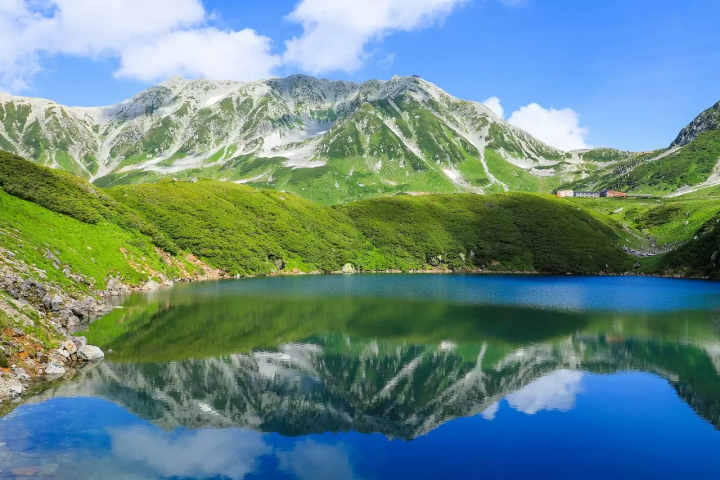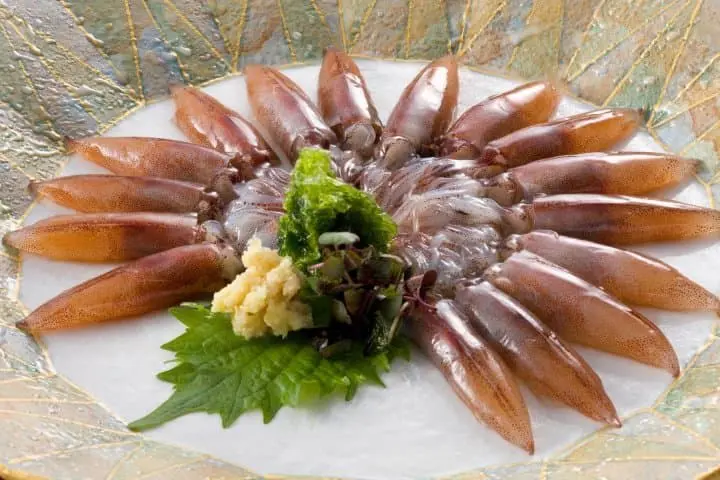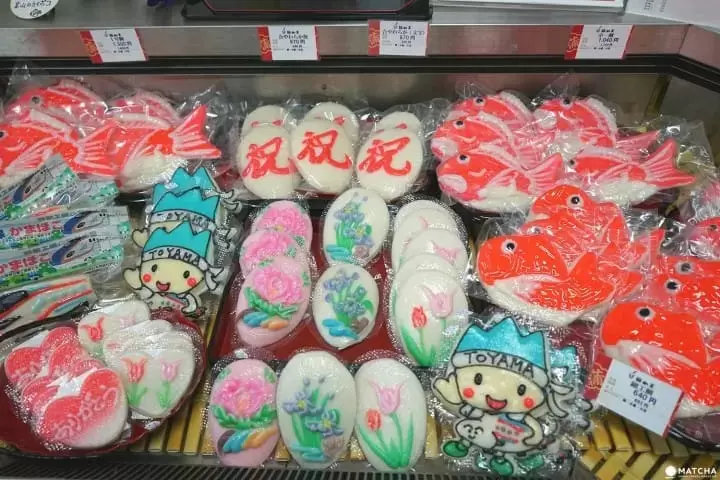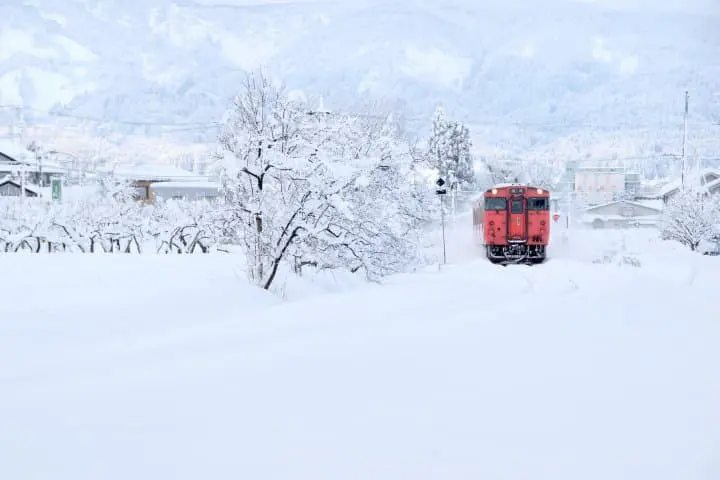Top Things to Do in Toyama: Scenic Views, Local Food, Best Hotels

Toyama Prefecture is home to the scenic Tateyama Kurobe Alpine Route and Toyama Bay, as well as folk crafts and the photogenic Toyama Glass Art Museum. Read on to learn the best things to enjoy in Toyama, local cuisine, and travel tips on access, hotels, and climate.
Toyama Prefecture: Home to the Scenic Tateyama Kurobe Alpine Route

Photo by Pixta
Toyama Prefecture faces the Sea of Japan and neighbors Ishikawa, Gifu, and Nagano prefectures. Visitors can enjoy the beauty of the Northern Alps, fresh seafood from Toyama Bay, unique craftworks, and historic townscapes.
Toyama: Top 12 Things to Do and Travel Tips
1. Tateyama Kurobe Alpine Route
2. Kurobe Dam: The Tallest Dam in Japan
3. Gokayama and Shirakawa-go Villages
4. Takaoka: Doraemon's Hometown and Historic Townscapes
5. Kurobe Gorge
6. Toyama Bay
7. Toyama Castle Park and History Museum
8. Toyama Glass Art Museum
9. Ikedaya Yasubeie Shoten
10. Toyama Municipal Folkcraft Village
11. Enjoy Local Food in Toyama
12. Hot Spring Resorts
Accessing Toyama from Tokyo
Famous Places to Visit Near Toyama: Kanazawa, Takayama, and Noto
Toyama's Climate and Recommended Clothing
Book the JR Pass for Whole Japan (7, 14, or 21 Days)
Book the JR Hokuriku Arch Pass (7 Days)
1. Tateyama Kurobe Alpine Route

Photo by Pixta
The Tateyama Kurobe Alpine Route is a trekking route along the breathtaking Hida Mountains, connecting Toyama and Nagano prefectures. Visitors can view the 3,000-meter-high Northern Alps from a cable car or trek the route.
There are many tourist attractions in this area, including Kurobe Dam, the largest dam in Japan. The main points of interest are easy to reach by cable car, ropeways, and buses.
The following are two model courses to tour the major spots.
Course No.1: The Highland Area

Mikurigaike Pond. Photo by Pixta
Trekkers can relish the alpine plants and views of the peaks on this course. From Tateyama Station, take the Tateyama Cable Car to Bijodaira. After switching to the Tateyama Kogen Bus, it is a 30-minute ride to Midagahara.
It takes 40 minutes to the next destination, Mikurigaike Observatory, aboard the Tateyama Kogen Bus. The trek around the pond takes another 40 minutes. This is also an ideal place to take photographs. Murodo Terminal, located a 20-minute walk away, is the final stop.
Café Rindo inside Hotel Tateyama is located nearby. The cafe is known for shiro-ebi don (a bowl of rice topped with white shrimp) and chiffon cake inspired by Kurobe Dam. There are also souvenir shops in this area.
Course No.2: The View of the Mountains and Kurobe Dam

The Snow Walls near Murodo Station on the Tateyama Kurobe Alpine Route ©Toyama Tourism Organization
Those interested in seeing fantastic scenery should visit the Snow Walls, a two-minute ride from Murodo Terminal on the Tateyama Kogen Bus. Huge banks of snow rising up to 20 meters can be seen here yearly from April to June.

After the Snow Walls, switch to the Tateyama Tunnel Trolleybus. It is a 10-minute ride to Daikanbo, which offers a panoramic view of the Tateyama mountain range from Unjo Terrace.
The next stop is Lake Kurobe, which can be reached by riding the Tateyama Ropeway and Kurobe Cable Car. Visitors can enjoy a walk around the dam, a pleasure boat cruise, or watch the dynamic water discharge from the observatory.
Search for Discount Tickets for on the Highway/Night Buses to Toyama
↑ Return to the top of article.
2. Kurobe Dam: The Tallest Dam in Japan

Picture courtesy of ©Toyama Tourism Organization
Kurobe Dam, located on the border of Toyama and Nagano prefectures along the Tateyama Kurobe Alpine Route, is the tallest dam in Japan.
One of its appeals is the water discharged at ten tons per second daily at specific hours for the visitors' enjoyment. They can watch the spectacle from the observatory and the Rainbow Terrace. An actual rainbow may appear during the event on sunny days!

Picture courtesy of ©Toyama Tourism Organization
Visitors can also enjoy a pleasure boat cruise or stroll around the lake's promenade.
↑ Return to the top of article.
3. Gokayama and Shirakawa-go Villages
Gokayama is an area with houses built in gassho style, a traditional type of architecture. The villages of Ainokura and Suganuma, along with Shirakawa-go in Gifu Prefecture, are designated as World Heritage sites. From Gokayama, it is a 30-minute drive to Shirakawa-go.

Picture courtesy of ©Toyama Tourism Organization
There are observatories in the villages where visitors can photograph the beautiful scenery. The museum inside one of the houses displays its unique structure alongside tools used back in the day.
↑ Return to the top of article.
4. Takaoka: Doraemon's Hometown and a Historic Townscapes

From Toyama Station, it's a 20-minute ride on the Ainokaze Toyama Railway to Takaoka City, located in the northwestern part of the prefecture.
Takaoka is the hometown of Fujiko F. Fujio, the creator of the popular anime character Doraemon. As you alight at Takaoka Station, you'll be welcomed by statues of the characters from the Doraemon series. Even some of the trams operating in the city are decorated with character designs.

Picture courtesy of ©Toyama Tourism Organization
Takaoka is originally famous for its district with traditional buildings. In the old days, the city prospered in metal casting. Kanaya-machi, with its stone-paved streets and buildings with thin-latticed windows, still maintains an air of those times.
Zuiryuji Temple, known for its grand architecture, has been designated a national treasure. The entrance gate and hall enshrining the Buddha are built from zelkova trees. While they exude a majestic air, the other temple buildings are also elegant and graceful.
Hotels near Zuiryuji Temple
↑ Return to the top of article.
5. Kurobe Gorge

Photo by Pixta
Kurobe Gorge is the deepest canyon in Japan, with many spots to enjoy views of the mountains and stream.
The gorge is especially picturesque during the fall foliage season. The trolley train running along the gorge has no glass in its windows, so passengers can enjoy the unobstructed view.

Picture courtesy of ©Toyama Tourism Organization
Those who wish to take memorable photos should stroll the promenade near Kuronagi Station. The trolley trains crossing the Atobiki Bridge, which is 60 meters in height, can be seen as they disappear into the mountains.
From the promenade, it is a 20-minute walk to Kuronagi Onsen, where visitors can enjoy the view of the gorge from an open-air bath.
↑ Return to the top of article.
6. Toyama Bay

Picture courtesy of ©Toyama Tourism Organization
Toyama Bay has a 3,000-meter-high mountain range in its background—a truly rare sight! Abugashima, the largest island in the bay, and the grand Tateyama mountain range can be seen from Himi Nadaura Beach, one of the viewing spots.
The maintenance of Toyama Bay is in the hands of Beautiful Toyama Bay Club, an NGO supported by UNESCO that assists in various activities to preserve the area's beauty.
↑ Return to the top of article.
7. Toyama Castle Park and History Museum

Photo by Pixta
Toyama Castle Park is built on the former site of Toyama Castle, located a 10-minute walk from JR Toyama Station. The castle, surrounded by a moat filled with water drawn from a river, used to be called ukishiro (floating fortress).
Toyama Castle was originally constructed in 1543 and belonged to the influential Maeda clan. The castle keep was dismantled after the Meiji Restoration (1868) and the remains have been destroyed in the bombings during World War II.
The current reconstruction dates back to the 1950s and houses the city's history museum. There is also a beautiful Japanese garden in the castle park precincts.
Hotels near Toyama Castle Park
↑ Return to the top of article.
8. Toyama Glass Art Museum

The Toyama Glass Art Museum displays works by domestic and international glass artisans. It is located on the second to sixth floors of Toyama Kirari, a building designed by famous Japanese architect Kengo Kuma. Toyama Kirari is also home to the city library.
The museum hosts permanent and special exhibitions. The admission is 200 yen. Visitors can browse the exhibition in the foyer for free.
The museum shop on the second floor handles various glass-inspired stationery, making it an ideal place to look for stylish souvenirs from Toyama.
Hotels near Toyama Glass Art Museum
↑ Return to the top of article.
9. Ikedaya Yasubeie Shoten: A Historic Pharmacy

Toyama has been famous for producing medicine ever since the 17th century. During the Edo period (1603-1868), Toyama medicine sellers used to travel all around Japan to sell their products.
Ikedaya Yasubeie is one of the pharmacies that have been in business ever since the Edo era. Their main store is located in the heart of Toyama City. Visitors can see here traditional tools for making medicine, as well as containers and drawers with hundreds of traditional ingredients.
At the store on the first floor, you can buy medicine, herbal teas, and other pharmaceutical products made by Ikedaya Yasubeie. The second floor is a dining space specializing in healthy dishes made based on the old Chinese principle that food itself is a type of medicine.
Hotels near Ikedaya Yasubeie Shoten
10. Toyama Municipal Folkcraft Village

Photo by Pixta
The Toyama Municipal Folkcraft Village is a complex of nine facilities with exhibits related to Toyama's folk arts and traditional culture.
The Folk Art Museum with its thatched roof, the Medicine Peddler Archives showcasing Toyama's history as a center for medicine production, the Museum of Ceramic Art, and the Museum of Archeology are just some of the highlights. Takamura Gyujin Memorial Art Museum displays works by Gyujin, a suibokuga (ink wash painting) artist born in Toyama.
Some of the structures have been relocated from remote areas and the complex has the atmosphere of a peaceful mountain village. Visitors can enjoy a bowl of matcha green tea at Maruyama-an, a tea ceremony room.
The Toyama Folkcraft Village can be accessed by taking the Toyama City tour bus “Gurutto Bus” Northwest Route and getting off at the Minzoku Mingei Mura stop. The entry fee to a single museum is 100 yen while a ticket for all the museums is 530 yen.
Hotels near Toyama Municipal Folkcraft Village
11. Enjoy Local Food in Toyama
Toyama boasts delicious seafood caught in the Sea of Japan. The following are some of the local specialties.
Shiro-ebi (White Shrimp)

Picture courtesy of ©Toyama Tourism Organization
Shiro-ebi (white shrimp) is one of the famous products of Toyama Prefecture. The translucent, slightly pink-colored shrimp, which is about five centimeters long, is called the jewel of Toyama Bay. It is either served as sashimi or sushi while also used in deep-fried dishes.
Hotaru-ika (Firefly Squid)

Picture courtesy of ©Toyama Tourism Organization
The deep waters of Toyama Bay are home to hotaru-ika (firefly squid). In the springtime, the squids light up the ocean during spawning season. They are served as sashimi or dressed with vinegar and miso. Hotaru-ika is also cooked in the okizuke (*1) style.
*1: A dish made by steeping the ingredient in soy sauce.
High-Quality Conveyor Belt Sushi

Picture courtesy of ©Toyama Tourism Organization
Since Toyama is known for its fresh seafood, the prefecture is famous for tasty, budget-friendly conveyor belt sushi restaurants.
Sushitama, with stores in Toyama Station and Toyama City, uses rice and soy sauce produced in the Hokuriku region. Customers can enjoy seafood from Himi Port, Toyama Bay, and Kanazawa Port.
Himi Kitokito Sushi manages 12 restaurants, including the main branch in Himi. Fish from Himi Port caught in the morning can be eaten for 110 yen. You'll find seasonal dishes, such as gunkan-maki (battleship roll) using shiro-ebi or hotaru-ika. The lunch menu offered only on weekdays features popular selections.
Iki-zushi, famous for preparing fish on the spot at Himi Port, has restaurants in Toyama and Takaoka City. The sushi lunch set starts from 500 yen, and Himi Jizakana Sanshu-don (rice bowl topped with three types of fish) is also popular among diners.
Beni-Zuwaigani (Red Snow Crab)

Picture courtesy of ©Toyama Tourism Organization
The Hokuriku region is famous for its crabs. Beni-zuwaigani (red snow crab) is a special product hailing from Toyama Prefecture. The best time to taste them is from autumn to early spring. The crab, roaming the depths of Toyama Bay, is popular for its thick and tender meat.
Toyama Black Ramen

Picture courtesy of ©Toyama Tourism Organization
Toyama Black, a local cuisine, is ramen served in a black broth. According to legend, the original dish was cooked with soy sauce and served to manual laborers. It was intended to be paired with rice, providing sodium for the sweating workers.
Nishicho Taiki and Men-ya Iroha, both in Toyama City, serves this local ramen.
The Best Souvenirs from Toyama

Kamaboko fish cake at Umekama Museum U-mei kan
Kamoboko fish cake is one of the famous products of Toyama. There is even a kamaboko museum in Toyama City, where visitors can take a look at the process of making fish cake. Umekama Museum U-mei kan has a souvenir shop offering fresh products made at their factory.
Another popular souvenir is the fragrant shiro-ebi senbei, rice crackers with a distinctive shrimp taste. Since Toyama consumes the most amount of konbu (kelp) per household in Japan, tororo konbu (shredded kelp) is another popular item to purchase. It adds a seafood flavor when sprinkled on rice or salad.
The prefecture is renowned for its craftwork, such as small baskets made from soft tin that are hand-shaped. Washi (Japanese paper), made with the abundant water flowing in the area, is another special product. It is used to make book covers and card cases.
↑ Return to the top of article.
12. Hot Spring Resorts in Toyama

Picture courtesy of ©Toyama Tourism Organization
Toyama has over one hundred types of hot springs.
Unazuki Onsen, located at the gateway to Kurobe Gorge, is a resort with over ten hot spring inns, souvenir shops, and foot baths. The water is clear and alkalescent, which is soothing to the skin. Visitors can relax in open-air baths while viewing the Kurobe River running through the forest.
There are other sites such as Himi Onsen, famous for fresh seafood dishes, and Shogawa Onsen, located in the alpine region and boasting a long history as a hot spring resort.
Read on to learn about the best hot spring inns and hotels in Toyama.
Unazuki Onsen Resort

Photo by Pixta
There are many hot spring inns near Unazuki Onsen Station (Toyama Chihou Railway).
Hotel Kurobe is the closet inn to the gorge, allowing trolley trains to be viewed from every guestroom. Guests can take in the mountain scenery from the open-air bath. Additionally, the hotel offers a free pick-up service from Unazuki Onsen Station.
Book a room at Hotel Kurobe on Booking.com

Picture courtesy of Booking.com
Yamanoha is a Japanese-style inn located three minutes on foot from Unazuki Onsen Station. The interior is decorated with Etchu washi and marquetry. Guests can enjoy an extensive view of the surroundings from the large bath.
Book a room at Yamanoha on Booking.com
Himi Onsen Resort

Buri (Yellowtail) Sashimi. Photo by Pixta
This seaside resort is located in Himi City, the northwestern part of the prefecture. It is famed for fresh seafood and the stunning view of Toyama Bay.

Picture courtesy of Booking.com
Umi-Akari, a Japanese-style inn, is situated on Nadaura Beach. The large bath offers a panoramic view of the bay. Inn-goers are treated to a meal featuring Himi beef and fresh local seafood such as buri (yellowtail) and oyster.
Tateyama Area
Those planning to trek the Tateyama Kurobe Alpine Route or visit Kurobe Dam should look for accommodations near Tateyama Station.

Photo by Booking.com
Hotel Mori no Kaze Tateyama, which offers a free pick-up service from Tateyama Station, is the perfect hub to tour the area. The large bath is filled with hot-spring water, while the Shikisai (villa-type guestrooms) has an open-air bath.
Book a room at Hotel Mori no Kaze Tateyama on Booking.com

Photo by Booking.com
Guests can enjoy the outdoor atmosphere at Tateyama Kokusai Hotel, along with the hot spring bath and Toyama cuisine. The hotel offers free pick-up service from Toyama and Tateyama stations, so hotel-goers with lots of luggage don't need to worry.
↑ Return to the top of article.
Accessing Toyama from Tokyo
Toyama Station, a stop on the Hokuriku Shinkansen Line, and Toyama Kitokito Airport, both located in Toyama City, serve as the gateway to the region.
By Airplane
To travel to Toyama City from Tokyo, take an ANA flight from Haneda Airport to Toyama Kitokito Airport. The flight takes approximately one hour.
Once arriving at Toyama Kitokito Airport, take the local bus on the Toyama Airport Line to Toyama Station. It takes approximately 30 minutes to reach the city center from the airport.
By Bullet Train
From Tokyo Station, it takes two hours and 10 minutes to reach Toyama Station on the Hokuriku Shinkansen bullet train. The train stops at three stations: Toyama, Shin-Takaoka, and Kurobe Unazuki Onsen.
If you are visiting Japan on a tourist visa, we recommend using the Hokuriku Arch Pass, which allows holders unlimited rides on JR lines and the bullet train for seven consecutive days in the Tokyo-Hokuriku-Osaka area. With this pass, you can also visit Nagano, Kanazawa, and Takayama on your way from Tokyo to Osaka and Kyoto.
To purchase the Hokuriku Arch Pass, you can either visit the JR ticket offices in Japan or buy it online in advance.
Book the JR Hokuriku Arch Pass (7 Days)
By Highway Bus
The daytime bus departs from the east gate of Ikebukuro Station, taking roughly 6.5 hours to Toyama Station. There are also nighttime buses from Tokyo Station and the Shinjuku Expressway Bus Terminal (Busta Shinjuku).
Famous Places to Visit Near Toyama: Kanazawa, Takayama, and Noto
Kanazawa

Kenrokuen Garden. Photo by Pixta
Kanazawa is a city in Ishikawa Prefecture, which neighbors Toyama. The city offers many attractions, such as nostalgic scenery, traditional craftwork, and Kenrokuen, a charming Japanese garden.
From Toyama Station, it is a 20-minute ride along the Hokuriku Shinkansen to Kanazawa Station.
The Noto Peninsula

Wajima Morning Market. Photo by Pixta
At the Noto Peninsula, located in northern Ishikawa, visitors can enjoy views of the Sea of Japan, paddy fields, and fresh seafood sold at the asaichi (morning market) in Wajima City. From Kanazawa Station, it takes 2 hours and 20 minutes to Wajima by bus.
Takayama

Photo by Pixta
Gifu Prefecture is located south of Toyama. Hida Takayama in Gifu is an alpine sightseeing area where visitors can relish the old-town scenery, trek in Mt. Norikura, and enjoy hot spring baths. From Toyama Station, it takes an hour and a half on the JR limited express to Takayama Station.
↑ Return to the top of article.
Toyama's Climate and Recommended Clothing

Photo by Pixta
Toyama Prefecture faces the Japan Sea and sees heavy snowfall in the wintertime. The annual amount of precipitation, along with the humidity, is also high.
The average temperature in spring and autumn is about 15 degrees Celsius, which is close to Tokyo but drops significantly in winter. Those visiting during the cold season should wear waterproof sneakers, boots, and a down jacket.
↑ Return to the top of article.
Enjoy Your Trip to Toyama
Toyama Prefecture has everything a traveler could hope for, including mountains, oceans, delicious local cuisine, and shopping. Enjoy them all on your next trip here!
Read also
Main image by Pixta
Born in Yamagata Prefecture. I have experience working in community development at the foot of Mt. Fuji and PR for local products across the country, and am currently working in Tokyo to disseminate information about Yamanashi Prefecture. A mother of one who loves local gourmet food and alcohol.
























































![[2026] Top 5 Strawberry Picking Spots in Tokushima, Naruto| Farms and Access Guide for January to May](https://resources.matcha-jp.com/resize/720x2000/2025/03/06-227165.webp)
![[Yamanashi/ Hokuto City] 4 Hot New Spots Opening in 2026](https://resources.matcha-jp.com/resize/720x2000/2025/12/12-252747.webp)


